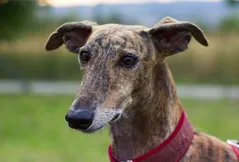
Manchester Terrier (Standard)
A well-mannered, active terrier, the Manchester (both Toy and Standard) is keenly intelligent, a bit stubborn, and barky.
Overall Status
| Height | 15 to 16 inches at the shoulder |
| Temperament | Spirited, Bright, Keenly Observant |
| Weight | 12 to 22 pounds |
| Life Expectancy | 14 to 16 years |
| Coat Color | Black, Black and Tan, Blue |
| Barking Level | Likes To Be Vocal |
Quick Factors
| Playfulness | |
| Dog Friendly | |
| Exercise Need | |
| Grooming Needs | |
| Strangers Friendly | |
| Family Affectionate |
Daily Care
Grooming Tips
When it comes to grooming, the Manchester Terrier is an easy keeper. Though the breed is naturally clean with little doggie odor, a bath every three months (or when he gets dirty) in a mild shampoo is a good idea. Brush his sleek coat with a natural bristle brush or mitt. Use coat conditioner/polish to brighten the sheen.The rest is basic care. Trim the nails as needed, usually once every few weeks. Brush the teeth frequently with a vet-approved pet toothpaste for good overall health and fresh breath.Check the ears weekly for dirt, redness or a bad odor that can indicate an infection. If the ears look dirty, wipe them out with a cotton ball dampened with a gentle, pH-balanced ear cleaner recommended by your veterinarian.Introduce the ManchesterTerrier to grooming when he is very young so he learns to accept it, particularly nail trimming, patiently.
Exercise Tips
Unlike many terriers, the Manchester Terrier does not require an incredible amount of exercise. He will need several good strolls daily to keep him fit and happy. This breed loves to travel and will be thrilled to go with his family on whatever errands they have in store for the day. Whether it’s a trip to the park or shopping at the pet store, the Manchester Terrier will be happy to tag along.Manchesters also love to play fetch and will happily run back and forth with a ball or toy for hours. Their playfulness and energy make this breed the perfect companion for an active family with kids. Keep in mind that they are quick, despite their short legs and can be gone in a flash if unleashed or not in a fenced yard.
Feeding Tips
The Manchester Terrier should do well on high-quality dog food, whether commercially manufactured or home-prepared with your veterinarian’s supervision and approval.Dry food will help prevent the buildup of plaque, tooth loss, gum disease and bad breath. Tooth loss is a problem with the breed that can be easily prevented. Manchester Terriers love to eat and tend to become overweight very quickly. Their food intake should be limited to prevent overeating.Learn about whichhuman foodsare safe for dogs, and which are not. Check with your vet if you have any concerns about your dog’s weight or diet.Clean, fresh water should be available at all times.
Health Tips
Manchester Terriers have an average life span of about 15 years. Breed health concerns may include von Willebrand disease, Legg-Calve-Perthes disease, pattern baldness (mainly in females), Ehler-Danlos syndrome (cutaneous asthenia), lens luxation, cataracts and generalized progressive retinal atrophy (GPRA). These short-haired dogs become easily chilled and should wear a sweater or coat when outside in icy weather for any length of time.
Trainability
Not the easiest breed in the world when it comes to training, the Manchester Terrier needs a patient and calm trainer.His stubborn streak means that the trainer must always have loads of cookies to keep him interested in the session. Harsh methods and yelling will cause this breed to shut down.Many owners have found that their Manchester Terriers can be great therapy dogs. They are easy to put in the car and actually like going for rides, which makes visiting hospitals and nursing homes easy.Providing they were socialized properly and had basic obedience training, Manchesters can do good things for those in less than ideal health.
History
The Manchester Terrier is a direct descendant of the early English Black and Tan Terrier, which was highly prized for its working ability as a "ratting" dog in the industrial areas of the North of England.These early dogs were more rugged than the breed is today, but the Manchester still maintains the physical structure of a working terrier. When first officially classified, all smooth-coated, black and tan terriers (including the smaller, Toy, variety) were called Old English Terriers.The present breed type was said to be influenced by the possible introduction of Whippet blood for refinement, plus theBull Terrierand White English Terrier. Samuel Handley of Manchester, England, is credited with stabilizing the breed. As a result of his efforts, the breed became known as the Manchester.






